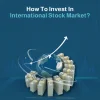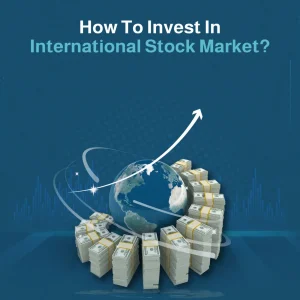If you’ve ever asked yourself how much money you can make investing in stocks, you’re not alone. It’s one of the most common questions new investors have , and one of the hardest to answer with a straight number.
Stock investing can absolutely build wealth, but it’s not magic. It takes time, strategy, and patience. One person might double their money over 10 years. Another might lose money in a single week. What makes the difference? That’s what this guide will help you understand.
In 2025, markets are still unpredictable. We’ve seen strong growth in certain regions, like Saudi Arabia, alongside global shifts in inflation, tech, and interest rates. But the basic principles of investing haven’t changed. The earlier you start, the more consistent you are, and the more informed your decisions, the better your long-term outcomes.
In this blog, we’ll break down the real factors that affect how much money you can make investing in stocks. We’ll look at what realistic returns look like, what you can expect in different scenarios, and how to build a balanced portfolio — including why stocks alone aren’t always enough.
Let’s get into it.
More topics can be read on the Gamma blog
How much money can you make investing in stocks realistically?
The honest answer: it depends on several factors. But there are some benchmarks you can use to form realistic expectations.
Historically, the average return from a diversified stock portfolio has been around 7 to 10% annually, after inflation. That’s based on decades of data, especially from indexes like the S&P 500. So, if you invest $10,000 and earn 8% per year, you could have:
- $10,800 after one year
- $14,700 after five years
- $21,600 after ten years
- $46,600 after twenty years
That’s assuming you reinvest all your returns and don’t pull your money out during a downturn.
Now, that’s just one scenario. Some years will be higher, others lower — and you might have a few that are negative. The truth about how much money you can make investing in stocks is that your outcome depends more on how long you stay invested than how lucky you get with timing.
Time is your biggest advantage. The longer you leave your money in the market, the more compound growth can work in your favor. It’s not about making huge gains fast — it’s about steady progress that builds over years.
What factors affect your potential stock market returns?
A lot of people expect to earn high returns without understanding what really drives them. Let’s break down the most important factors that determine how much money you can make investing in stocks.
- How much you invest
The more capital you put in, the more opportunity you have to grow. A 10% return on $1,000 is just $100. On $10,000, it’s $1,000. This is why increasing your contributions — even gradually — makes a big difference over time.
- How long you stay invested
The stock market rewards patience. Compounding takes time to snowball. If you invest for just two or three years, your gains may be small or inconsistent. But stretch that out to 10 or 20 years, and you’ll see much more meaningful results.
- What you invest in
Not all stocks perform the same. Some are stable dividend-paying companies. Others are growth stocks that might rise fast but carry more risk. Index funds, sector ETFs, and individual companies all carry different return potential — and different levels of volatility.
- Market conditions
Global economic shifts, interest rates, political stability, and inflation all impact returns. If you’re investing in Saudi Arabia, for instance, local reforms under Vision 2030 could drive growth in some sectors more than others.
- Investment fees and taxes
Platform fees, fund management costs, and taxes can quietly reduce your profits over time. Choosing low-fee platforms and understanding your tax obligations helps keep more of your money invested.
- Your behavior
This is often overlooked. Emotional investing, like panic selling during a dip or buying just because others are, can hurt your returns. A consistent strategy usually beats reactive decisions.
Each of these shapes how much money you can make investing in stocks. Knowing what to expect puts you in a stronger position to earn well over time.
Examples of stock returns over time
To make this more concrete, here are a few examples of how real investments could play out, using historical data.
- The S&P 500
If you had invested $10,000 into the S&P 500 in 1995 and reinvested dividends, your investment would be worth over $100,000 by 2025. That’s an average annual return of around 9 to 10%.
- Consistent monthly investing
Let’s say you invest $300 per month for 20 years in a diversified index fund earning 8% per year. You’ll end up with about $170,000 — from $72,000 in total contributions. That’s the power of consistency and compounding.
- Saudi stock market example
The Tadawul All Share Index has had a more mixed history, with average annual returns around 5 to 7% over the past decade. Some years have seen sharp gains, while others were flat or negative. Still, it remains a key part of many local investors’ portfolios.
- Apple or Aramco as case studies
Investing $1,000 in Apple in 2010 would have grown to over $20,000 by now. Meanwhile, Aramco shares have offered more moderate returns since their IPO in 2019 but are seen as a relatively stable option for dividend income.
These examples show the wide range of results you can get depending on your stock picks and timeline. But across all of them, one thing is clear: long-term investors tend to see better outcomes.
Can you get rich from stocks alone?
Technically, yes — but it’s rare, and it takes a very specific kind of discipline or risk tolerance.
There are two common paths to getting rich from stocks:
- Investing early and consistently for decades.
If you start young and keep investing in diversified funds or high-performing companies, compound interest can turn modest monthly contributions into millions over time.
- Taking concentrated high-risk bets that pay off.
Buying the right stock early, like Tesla or Nvidia before their big runs, can deliver huge returns. But these are exceptions, not the rule, and often come with higher risk of loss.
For most people, stock investing is better seen as a tool for long-term wealth building, not overnight success. You can absolutely grow your money, beat inflation, and create financial security. But relying on stocks alone to build a fortune is risky.
Stock markets go through cycles. If all your money is tied to them, a downturn could wipe out years of gains. That’s why many experienced investors diversify across asset classes, including property and private equity, to create a more stable financial future.
How Gamma Assets helps you diversify beyond the stock market
While stocks are a great tool for long-term growth, they’re just one piece of the puzzle. Platforms like Gamma Assets help you access alternative investments like real estate, giving you more stability and options.
Investing through Gamma Assets means you can buy into real property projects, income-generating developments, or fractional ownership opportunities that aren’t tied to daily market shifts. These kinds of assets are especially valuable in uncertain times when the stock market may be volatile.
By combining stock investments with real estate or other asset types, you reduce your overall risk and improve your chances of steady, long-term growth. This is especially relevant for investors in Saudi Arabia, where Vision 2030 is opening up new opportunities in infrastructure, hospitality, and logistics.
So while the question may be how much money can you make investing in stocks, the better question might be: how do you build a portfolio that protects and grows your money? Gamma Assets can help answer that.
What’s the Smart Way to Approach Stock Investing?
So, how much money can you make investing in stocks?
If you stay consistent, invest for the long term, and avoid emotional decisions, the potential is significant. Even with modest monthly contributions, it’s possible to build six-figure wealth over time. But that doesn’t mean stocks are a guaranteed win or a shortcut to getting rich.
The most successful investors treat stocks as part of a bigger strategy. They plan for the long term, diversify across different assets, and invest according to their goals — not what’s trending online.
Whether you’re just starting out or already building a portfolio, make sure you’re balancing growth with stability. Stocks can help you grow your wealth. Platforms like Gamma Assets can help you protect it.
You can start investing now from the Gamma Asset Investment Platform
FAQ
Can I live off stock market returns in the future?
Yes, but it depends on how much you’ve invested and how consistently you’ve done it. To safely live off your investments, you’d need a sizable portfolio — often upwards of $500,000 to $1 million — and a sustainable withdrawal rate of about 3 to 4% per year.
Is stock investing profitable in Saudi Arabia?
It can be. The Tadawul exchange has grown in recent years, especially with Vision 2030 initiatives. Local investors can find opportunities in banking, petrochemicals, and healthcare. Just like anywhere else, returns depend on timing, diversification, and staying invested long term.
How long does it take to make money from stocks?
In some cases, you might see gains within a year or two, especially during a strong market. But consistent returns typically take at least 5 to 10 years. The longer your investment horizon, the more likely you are to see positive results , even with short-term dips along the way.













